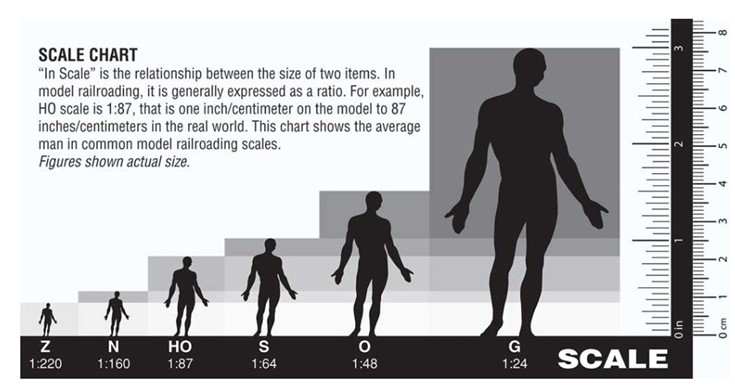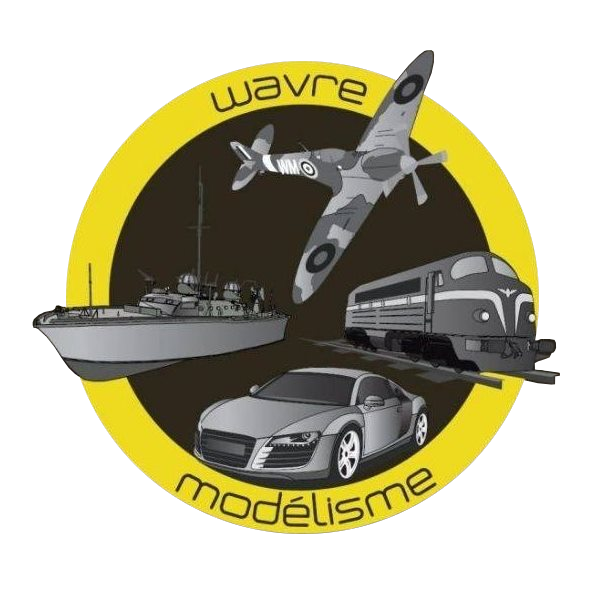
The Trains
Published on 17-12-2024The different train scales
- Z = 1:220 (1 cm in Z corresponds to 220 cm in real life). Track gauge is 6.5 mm for standard track.
In 1972, unable to stand out from the competition with the N scale (1:160), Märklin introduced the Z scale. Loved by its fans, a gadget for others, the Z scale offers maximum possibilities with minimal space. Especially popular in Germany, Austria, Switzerland, and the United States, the Z scale or Miniclub (its commercial name) from Märklin is aimed at miniature enthusiasts.
- N = 1:160. Track gauge of 9 mm.
The name comes from the number of millimeters between the rails of a standard track: nine. The initial is the same in many languages: nine in English, neun in German, neuf in French.
- HO = 1:87. Track gauge of 16.5 mm.
With these two systems AC (Alternative Current) or DC (Direct Current).
- 1 = 1/32. Track gauge of 45 mm.
This is the largest scale industrially produced for model railway modeling on standard tracks.
- 2 or more commonly called G = 1/22.5. Track gauge of 64 mm.
The first locomotives and LGB cars were presented 40 years ago! In 2008, LGB was taken over by Märklin: the production of LGB track started at the beginning of January 2008 at the Hungarian Märklin factory in Györ. . A technician from Nuremberg, specialized in injection molding, was convinced to come work in Hungary. This allowed the expertise from Nuremberg to be transferred to the Györ site. LGB impresses with its size, making this railway adventure so fascinating! This illusion is almost perfect when the trains travel through the realistic nature of your own garden.

To start your project, we recommend you the book "Garden trains", available in the store!
How to choose your train scale?
To choose your scale, two options:
1) Choose based on the variety of existing models:
Two scales dominate the market, first H0, then N.
Increasingly popular, the N scale offers many advantages. The size of the tracks and elements allows you to create a compact layout even in a small apartment and offers incredible possibilities! For the same layout, N requires almost 4 times less space than H0. Moreover, N is the only scale where all the railway equipment on the market can be mixed without any problem.
The advantage of H0 is the ease of creating your own scenery and paying more attention to details.
2) Choose based on available space:
A 3.80 m x 2.40 m layout in H0 would (for the same layout) result in a 2.00 m x 1.30 m layout in N.
Needless to say, if we kept the same dimensions (3.80 m x 2.40 m) in N, the layout would be significantly larger and more developed than in H0.
How to choose your "system"? DC or AC?
The miniature train, from which all the scales of railway modeling have originated, was born. In 1895, Märklin created the first electric train. Most of them feature a three-rail track with a central rail where the current flows. Hence the term “3 rails”.
In 1938, the Trix Express system appeared with three rails running on 12V direct current. This third rail, considered aesthetically unappealing by modelers, disappeared to make way for the two-rail system. Hence the term “2 rails”.
Gradually, with the public introduction of H0 in the mid-50s, most manufacturers adopted DC traction on two-rail tracks, as in real life.
One manufacturer, Märklin, kept the AC power supply and, for greater realism, sliced the central rail into small blocks fixed to the ties.
Note that the two systems are incompatible with each other. Therefore, it's a one-way choice (although the rolling stock can be adapted to both systems).
Prior to the arrival of digital systems, the “three-rail” system had the advantage of easily installing turnouts and reversing loops since the two rails were at the same alternating voltage, and there was no need to manage current reversals as in DC. Digital technology has now addressed this issue, as such operations are now easily handled by independent modules.
The “two-rail” system is now much more open as it allows the use of equipment from all manufacturers and offers a track system that conforms to the prototype.
The Märklin system retains certain attractions but does not allow for strict modeling, as the alignment of "picots" in the middle of the ties will never match a real-world situation.
This situation leads to heated and recurring debates between the proponents of both systems.
How to choose the theme for your future layout?
The question of what drives model train enthusiasts to choose specific themes, layouts, or models is indeed a challenging one to answer. This is because the decision often reflects individual preferences and personal affinities. However, some common trends can be identified among hobbyists :
- Reproducing a “favorite” site, often tied to cherished holiday memories.
- Extending Childhood memories...
- Reproducing a typical network of a journal.
- “Crackking” on a specific locomotive model, whether it be steam, diesel, electric, or even a TGV. Enthusiasts who develop a particular fondness for a type of locomotive often build their entire network around it.
(steam, diesel, electric, TGV...) and build your network around it...
- Drawing inspiration from a particular era.
The key periods of railroads.
Here are the different periods (Belgium)
- Period I (1804-1925),
- Period II (1925-1945)
- Period III (1945-1970)
- Period IV (1970-1990)
- Period V (1991-...)
- Period VI is not officially recognized in France and Belgium, but has been in Switzerland since 2005...
In any case, we offer a wide selection from the largest train and accessory manufacturers!
We offer you a wide range of train models, accessories, and scenery to fulfill your railway passion in our sections TRAINS and DECORATIONS

